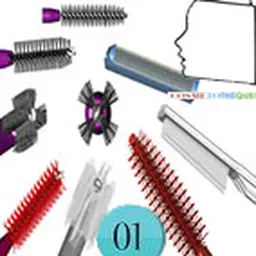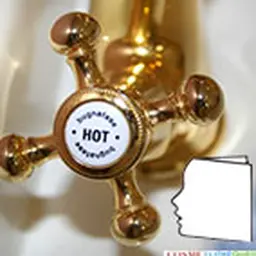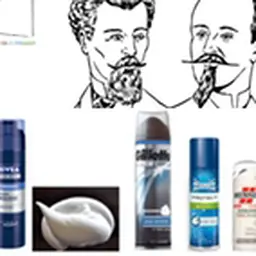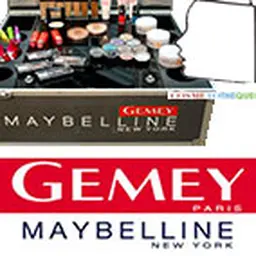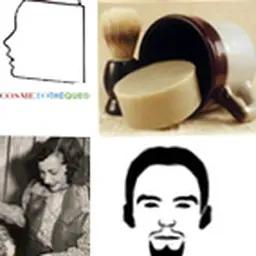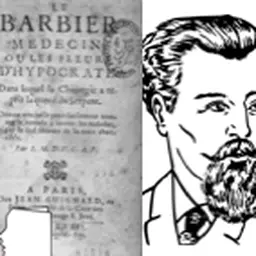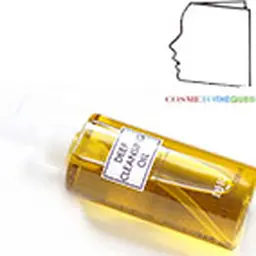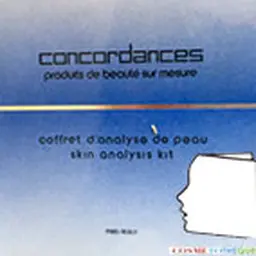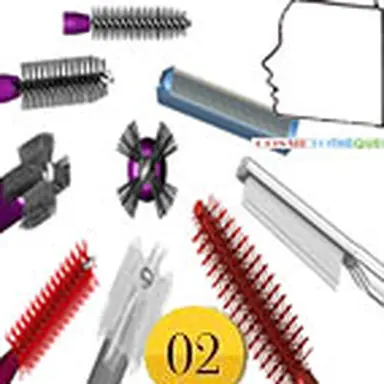
Let's continue the discovery of the world of mascara applicators with some of them very specific. In this second part, we will examine some atypical types of applicators illustrating perfectly the intense innovative activity in this sector.
Continuation of the article The Magic World of Mascara Applicators - Part 1 .
Various applicators
Double Mascara
The principle consists in presenting a product equipped with two tanks each equipped with an applicator, so as to allow the successive application of one and the other. The first product developed in this direction will be the"Coup de Théâtre" Mascara by Bourjois in the early 2000s. Many other proposals will follow, and this type of product will eventually settle permanently on the market.
Dewatering systems
An idea also emerged very quickly: by modulating the amount of product on the brush, we can more easily control the desired make-up effects. This function will often be dedicated to the wringer which operates in relation to the diameter of the stem.
One of the ideas consisted in trying to control the quantity of product on the brush by modifying certain parameters allowing spin-drying. Two competing ways were addressed: - adjustable wringer, - the double stem: one stem in the other.
Adjustable brushes and wringers
The principle consists in having a means to modify the geometry of the brush or the efficiency of the wringer. Among the technologies considered, some allow either the extension of this brush, or the modification of the twist, or the formation of a radius of curvature to allow the application. As far as the wringer is concerned, the idea is to be able to modify its diameter according to the type of make-up required. A loaded make-up corresponds to a looser wringer, the opposite allowing to measure the quantity of product on the brush differently. A knob or diaphragm device can then be used to select the desired setting. Nivea will offer an ephemeral product, but the mascara of reference on this principle for more than 20 years will be Maybelline's"Dial a lash".
Two Stem Mascara
The idea is to modulate the amount of mascara on the applicator by an effect at the wringer. The smaller the brush, the more product will be on the brush. There is a patent registered by Albea for this technology which has been used by several brands, including Bourjois, Mac or Essence. The products were a great success but especially to animate the market (promotional launches). The device consists of an applicator sliding in a sleeve so as to have two wringing systems in a single product. By using the product in one position (large rod), the spin is low and therefore the brush very loaded, in the other position (fine rod), the spin is tighter and therefore the brush less loaded.
Some patents also adopt this logic but have not yet led to launches.
Clickable mascara
These products relate to the closing system of the product. A different ergonomics on this point allows to improve the use. The principle consists in having a means of closing it by a click rather than by a thread. Several Coty Group products have been developed on this principle ("Calligraphy", among others).
Jumbo and King size containers
The capacity of mascara containers is an issue as the product must remain constant throughout the application phase. This means that the average capacity is between 7 and 10 g, but there is a tendency for all brands to develop large volume containers, sometimes exceeding 15 ml. The pioneering products in this trend are"Volum'Express Colossal" by Maybelline and"Lash Blast" by Covergirl.
The"unusual" applicators
A particular mention for a series of applicators resulting from the research of conditions of use rather than clever mechanical combinations. These applicators allow a frontal use gestures of the product thanks to a head in the shape of ball or present the characteristic to apply the product independently of the ability of the user. One of the main products of this generation was"Phénomène Eye" proposed by Givenchy. This applicator comes in a spherical shape.
Manufactured by Geka brush, this type of applicator has been taken over by other brands such as the L'Oréal group with the"Telescopic Explosion".
Or by a product offered by Avon under the name"Mega Effect", always signed by Geka Brush.
These products have had very different successes, quite remarkable for Givenchy, more mixed for Avon for example, judged by some users as a little"terrifying" by its form. Combinations between brushes and balls have also been proposed by some brands, mainly Korean, to try to combine the two application techniques. In this case, the main claim a better adaptation to both short lashes and long lashes, one of the permanent issues for this type of product.
Let us mention a few more projects that we will qualify as surprising, and which are in the process of gestation, as the one presented opposite.
Apply energy to applicators
Besides the different types of applicators, the in-depth examination of patents reveals multiple and varied solutions around the problem of mascara application. In his research, Jean-Louis Mathiez notes that it is very often the idea that consists in bringing energy into the application system, either to facilitate use or to modify the product. This energy is of different natures.
Rotation: from manual to electric rotation
Among the very first patents, one finds for example a brush activated by a crank which makes it turn to facilitate the application. In the 1970s, the Moulinex group also proposed a rotating mascara based on a spring system such as alarm clocks.
There are then many patents looking to manage this rotation problem.
It will be necessary to wait until 2010 to see a Canadian start-up proposing a rotating brush driven by a small motor and a battery to facilitate the application of the product. The mascara is called"Spinlash™". The success will not really be there.
At the same time, the luxury market, through the Dior brand, is addressing this issue through a partnership with supplier Albea. The product will be launched under the name"DiorShow 360" in 2011.
The Bourjois brand also proposes a mascara in this spirit, "Mascara Fast & Volume Perfect", but the product, which can rotate in the bottle until the battery is completely worn out, has some operating problems… it will finally be withdrawn from the market.
The Vibrating Mascara Saga
It all starts with the purchase of Duracell batteries by P&G with the Gilette brand in the bridal basket. Gillette has clean technology on vibrating razors. Around 2005, there will be a flurry of patents on technologies for the development of vibrating mascaras, foreshadowing future launches in this segment.
In 2008, when nothing had been happening in the field of patents for several years, this field was suddenly going to get very agitated through two players: the Estée Lauder group and L'Oréal. Both companies will introduce competing products to the market. Meanwhile, P&G doesn't move. The developments that we will see will be based on technologies derived from the vibrator developed for the mobile phone.
The products that will result from these developments will arrive on the market with technical difficulties related to the operation, but also an unusual complexity of merchandising and marketing communication.
The result was much better in terms of editorial impact in the press than in terms of financial income for the brands. The systems proposed by the L'Oréal group ("Oscillation" by Lancôme) and by Estée Lauder ("Turbo Lash") were a definite success. New operators like the Korean Amore Pacific, the Japanese Mitsubishi or the Maybelline brand of the L'Oréal group will launch themselves but the"vibration wave" has passed very quickly. One year later, nothing will remain of it, except a reuse of the device for an eyelash growth stimulator by the L'Oréal group.
Heat: heating mascara
This is a relatively old technique, that of moustache wax or eyelash wax. These very old products were used to shape and smooth beards, moustache or hair systems of all kinds. Applied in molten form with a mustache iron, these waxes allow a durable shaping. In this case, a melted wax is applied to the lash to thicken and take shape as it cools.
Starting in 2003, there will be a flurry of patents. All methods of heating will be considered to try to melt a solid product before application to the lashes rather than after.
The central problem revolves around the energy reserve. Besides the fact that cells and batteries are not very ecological, formulas, brushes and applicators are not easily able to accommodate electrical resistors. The thermal inertia and the heating time prevent the entire pasty material contained in a bottle from being heated. Thus a patent filed by Dior envisages the use of powder to melt, when another (Matsushita) considers the possibility that they are granules to melt.
Microwave technologies are even widely considered, but this means that brushes or applicators cannot incorporate metal parts.
Resistors to heat either the brush, the rod or the product are also envisaged. The energy source is particularly stressed. None provide energy over the lifetime of a conventional 10 or 12 ml product.
Recent improvements in mobile phone batteries make it possible to develop different heat sources. Several patents go in this direction, and some projects are very advanced even if they have not yet been seen. A recent very complicated patent takes this approach:
There are many security issues around these technologies.
An antiseptic mascara brush
Strand Cosmetics Europe has developed an antiseptic mascara brush whose main advantages are a marked improvement in the preservation of the product after opening and a limitation in the concentration and number of preservatives used in the mascara. The principle consists in depositing on the fibers of the brush an insoluble salt composed of a conservative with broad spectrum used as solution of cleaning of the ocular lenses, endowed with a good thermal stability. This has been patented (US8424147 B2, EP1662937 A2) and a name, Purcilon®.
Conclusions
Products from these devices can be considered as highly technological products. In addition, they constitute a rather complex whole and depend for an important part of specialists, either on packaging, or on formulas, often both, because the precise adjustment of one to the other is a key success factor.
Changes do not always follow a precise logic. This is as much a field of experimentation for marketing as for packaging engineers. This means that it is not the last that is the best.
These constant and sometimes brutal changes are made possible by the fact that mascara is a product with a high margin, which generates a lot of attractiveness and which more easily withstands the surcharges of innovation. It is not technological innovation that justifies the activity, it is above all the search for market shares. Finally, there is an important momentum effect. Let us expect this to continue.
| Contribution by Jean-Claude Le Joliff and Jean-Louis Mathiez This contribution is the result of a four-handed collaboration, a bit like in the development of this type of product: those of the formulator on the one hand and the packaging engineer on the other. Jean-Claude Le Joliff approached the formulator's point of view, having worked a lot on this family of products in his various professional experiences: Bourjois, Chanel, but also Intercos or Mascara Plus. On the packaging side, Jean-Louis Mathiez brought all his expertise, also acquired through numerous achievements for Bourjois, the Coty group (Rimmel, Margaret Astor, etc.) and others. He also holds numerous patents on application devices for this family of products. |

